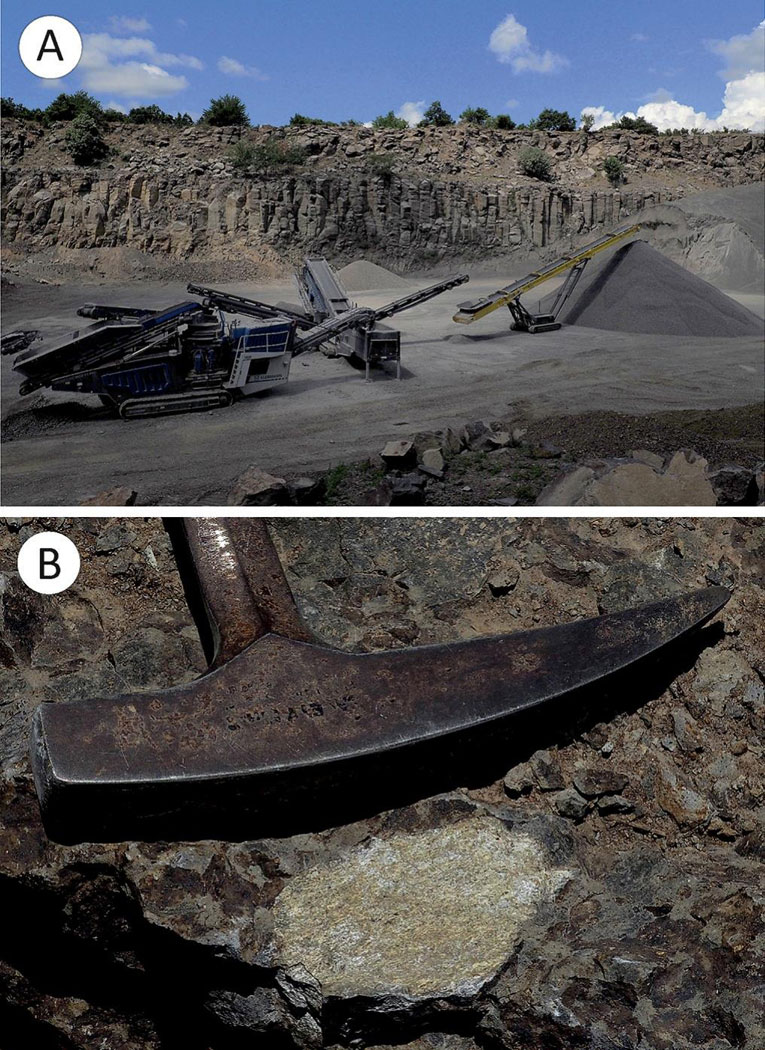Autoren: Luca Reato, Monika Huraiová, Lukáš Ackerman, Jana Ďurišová, Monika Horschinegg, Patrik Konečný, Thomas C. Meisel, Vratislav Hurai
Titel: Forearc magmatism in the Pannonian basin recorded by metasomatised skarnoid xenoliths in Pliocene basalt (Novohrad-Gemer Volcanic Field, Slovakia)
Abstract: Anorthite-diopside-spinel-forsterite xenoliths occur in basaltic lava flow in northern part of the Pannonian basin in the Novohrad-Gemer Volcanic Field (NGVF). Several lines of geochemical evidence suggest that the typical skarn assemblage originated by multiple carbonatitic and alkaline silicate metasomatism of pristine basalt to picrobasalt protolith rather than by the modification of crustal carbonates around shallow magma chambers. Interaction with mantle-derived magnesite or dolomite carbonatite melt triggered the crystallization of neoformed forsterite at the expense of primary clinopyroxene. The alkaline silicate metasomatism resulted in the replacement of primary diopside and augite by neoformed aegirine and aegirine-augite accompanied by amphiboles (richterite, katophorite, arfvedsonite). Weakly metasomatised Group 1 xenoliths retained their fore-arc magmatic geochemical signatures: flat REE patterns, low concentrations of high-field strength elements (Ti, P, Zr) and Ni compared to MORB, low ratios of highly-to-less incompatible elements (Ti/V, Zr/Y) relative to MORB, low Na2O, low total REE, and supra-subduction affinity of primary clinopyroxenes, being thus analogues to fore-arc basalts (FAB). In contrast, strongly metasomatised Group 2 xenoliths exhibit LREE-enriched patterns sub-parallel with those of host trachybasalts. Some Group 1 xenoliths also exhibit large positive Eu anomalies and strongly depleted signatures diagnostic of low-pressure plagioclase-pyroxene cumulates. One xenolith with complementary negative Eu, Sr and positive Rb anomalies has been identified as high-Mg basaltic andesite melt residuum. Sr and Nd isotopes plot along the OIB-MORB array. The Group 1 converges at initial 87Sr/86Sr and 143Nd/144Nd ratios of 0.7038–0.7041 and 0.5127–0.5128, respectively, thus recording a 140–190 Ma old mantle source. Thermobarometry data on metasomatically unmodified pyroxenes have been arranged along decompression cooling trend, propagating from ∼1230 °C and ∼ 1 GPa and ending at ∼1160 °C around atmospheric pressure. The maximum pressure indicates the melt generation zone ∼35 km deep, reflecting thin lithospheric mantle. The FABs identified for the first time in the AlCaPa megaunit corroborate the affinity of the NGVF lithospheric segment to Dinarides.
https://doi.org/10.1016/j.lithos.2024.107741
https://www.sciencedirect.com/science/article/pii/S0024493724002548?via%3Dihub


